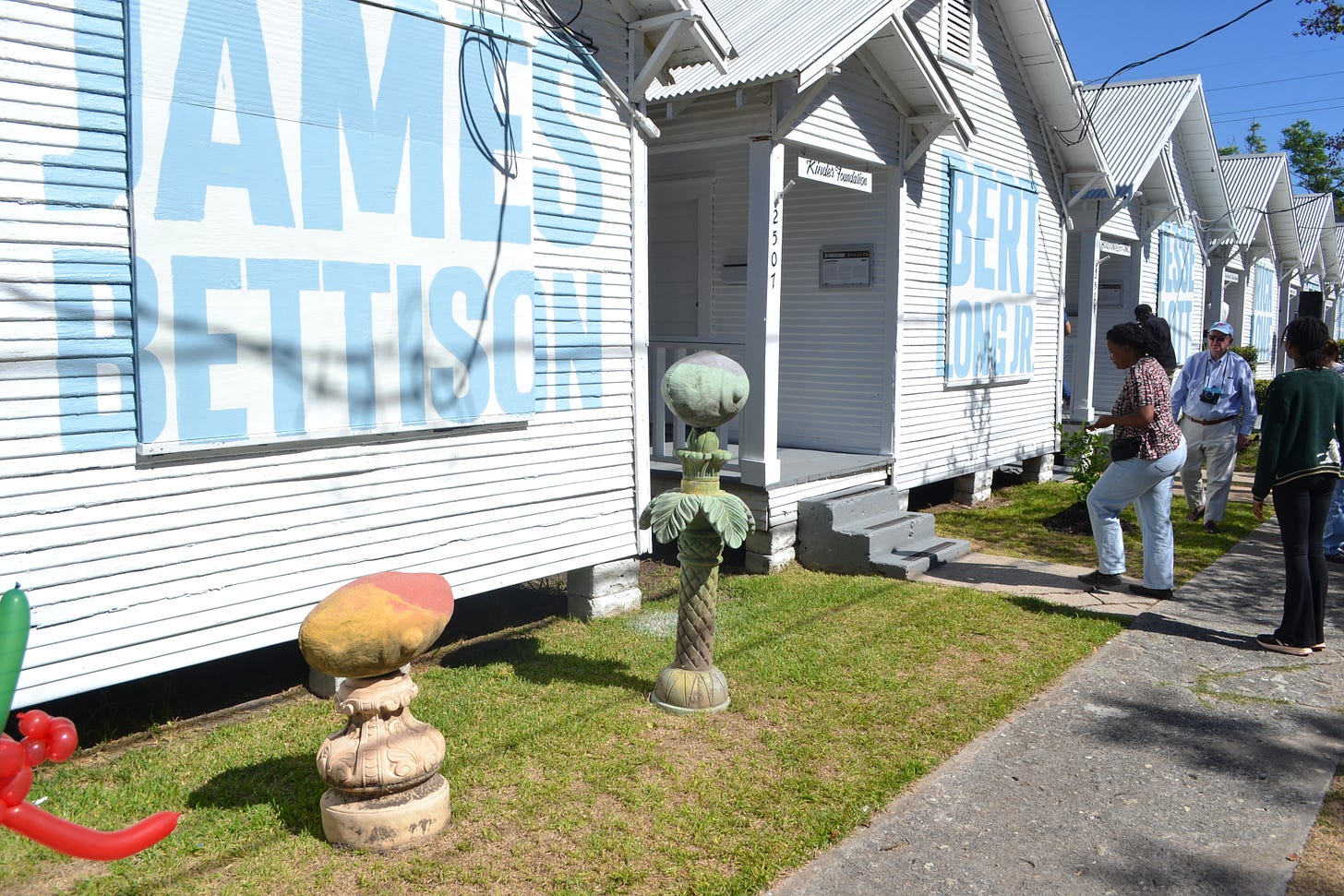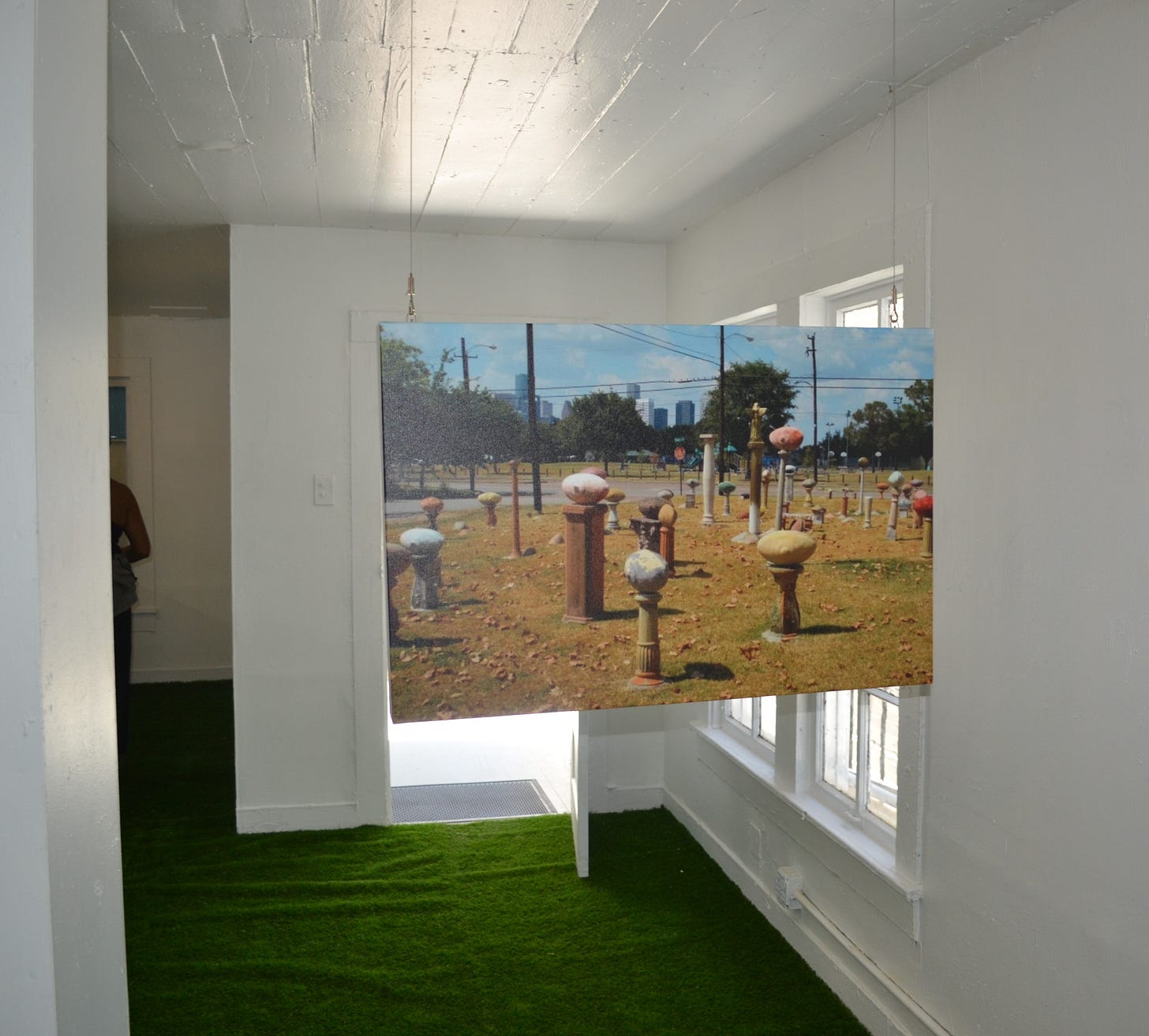In 1993, Rick Lowe and a group of Houston artists founded an innovative social practice project called Project Row Houses. This weekend, Project Row Houses celebrated surviving 30 years with a big block party. as well as an exhibit of each of the founding artists’ work. Project Row Houses’ art exhibit space is a series of refurbished row houses on Holman at Emancipation. Each artist has his work in one of the Row Houses (except Rick Lowe, for some reason). I swung by on Saturday to check out the scene.
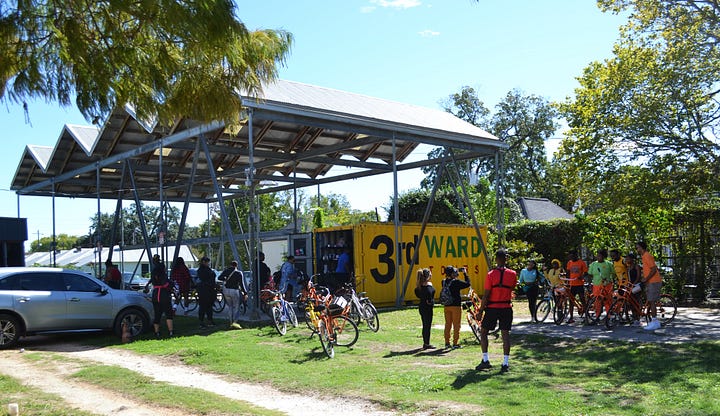
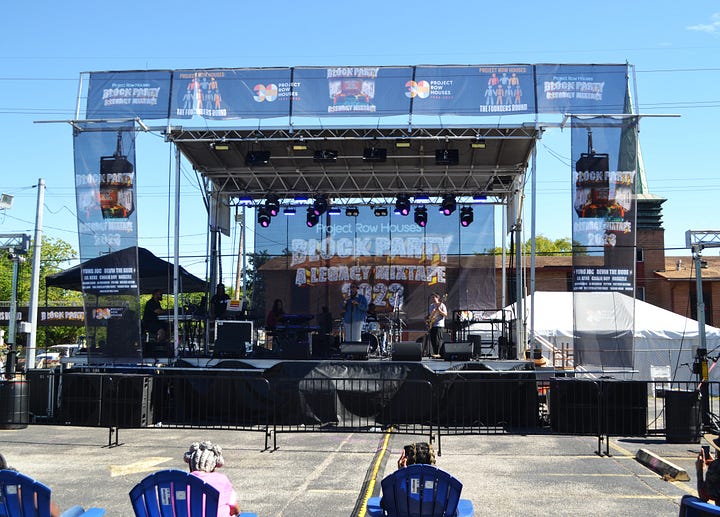
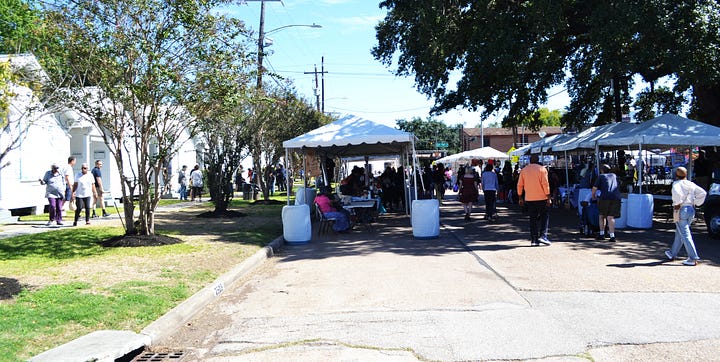
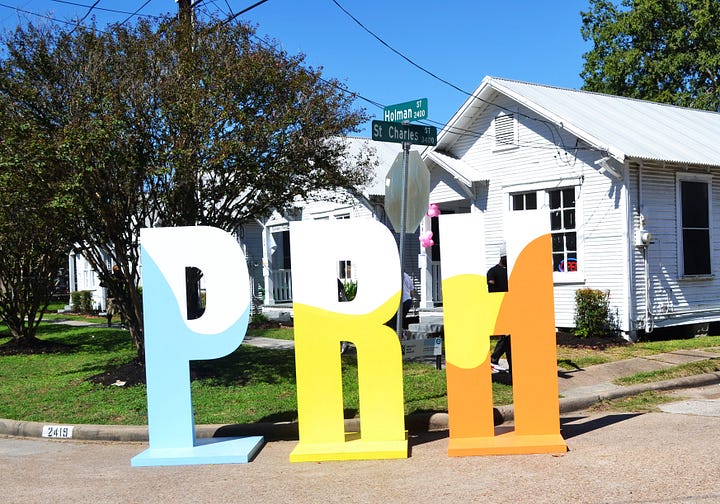
The party’s over, but you can see The Founder’s Round — the exhibits mentioned above — through February 18, 2024.
One thing that was inexplicable to me was that the artists’ names painted on each row houses didn’t match up with the art inside. For example, the Row House labelled “James Bettison” was actually the house dedicated to Bert Long (1940–2013). Long used to have a sculpture garden right next to El Dorado Ballroom. It was called Field of Vision, and featured a bunch of large concrete eyes balanced on pedestals, Two of the eyes can be seen above. Field of Vision was disassembled a few years ago, I suspect because it was a magnet for vandalism—over the years, there would always be one or two of the eyes knocked over.
Long’s exhibit was sort of a recreation of Field of Vision (curated by Danielle Burns Wilson) in a weirdly metaphoric way—the floor is covered with green carpet (representing the grass lawn on which Field of Vision was constructed) and a photos of the original piece. I understand why this is the work PRH chose to honor, since it is an important but vanished part of PRH’s history. That said, I wish they had shown some of Long’s wall art.
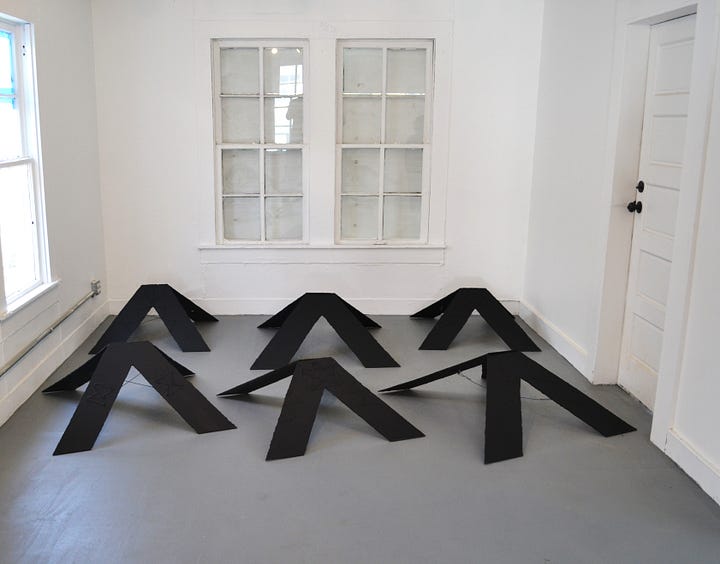
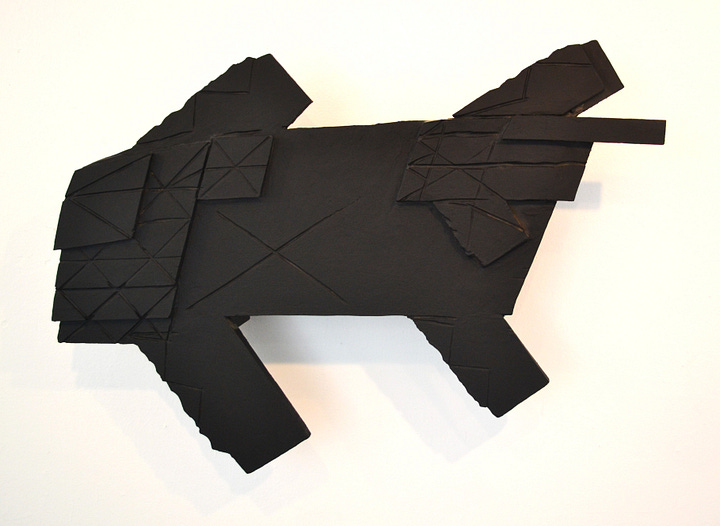
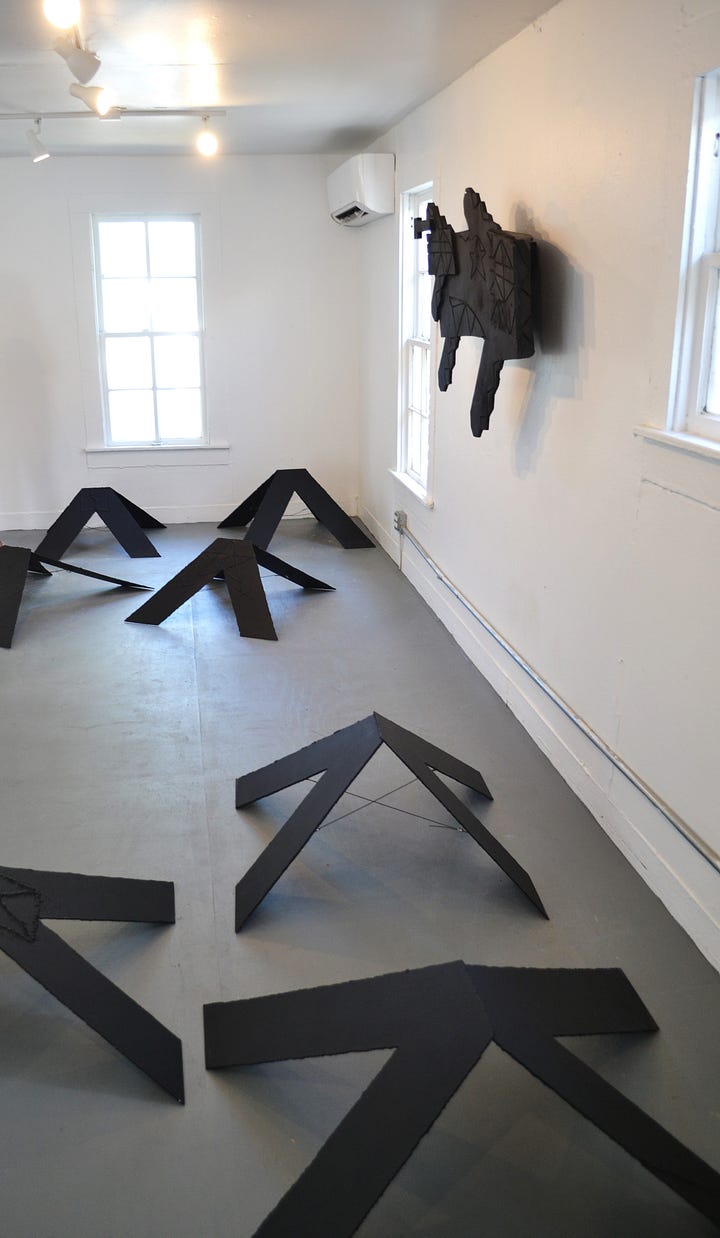
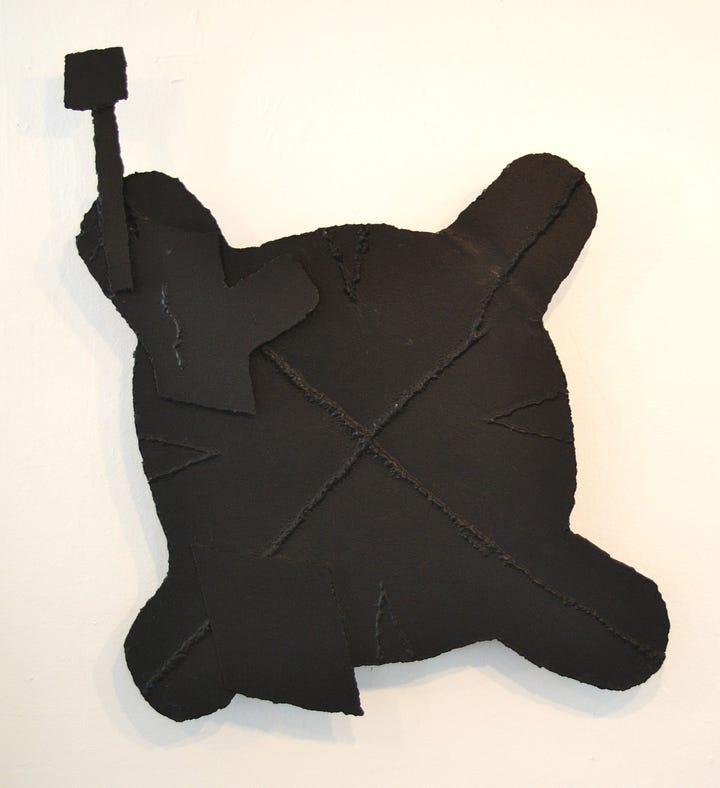
George Smith (b. 1944) was the sculpture professor at Rice University when I was a student there. I took one class from him, where I distinguished myself as one of the laziest students he ever had. He was influenced by Tony Smith, so his work included lots of hulking, looming black abstractions. (I recommend checking out his sculpture group Bandiagara on the campus of UH Downtown as an excellent example.)
Much of his work in recent years has been smaller. I wonder if this is a product of his age—maybe it is just too hard for a man in his 70s to make huge steel monoliths. That said, one can see a connection between his monoliths and this smaller work. The floor pieces remind me a little of anti-tank obstacles used in World War II.
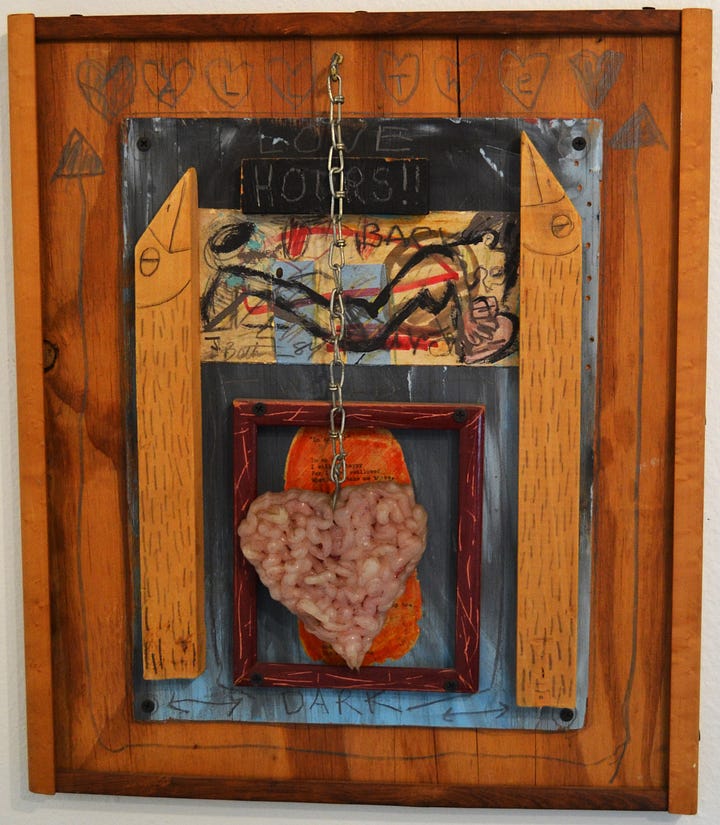
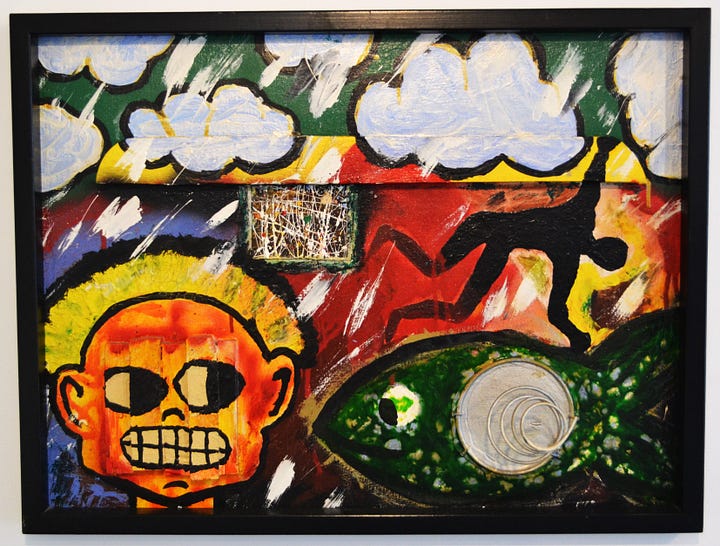
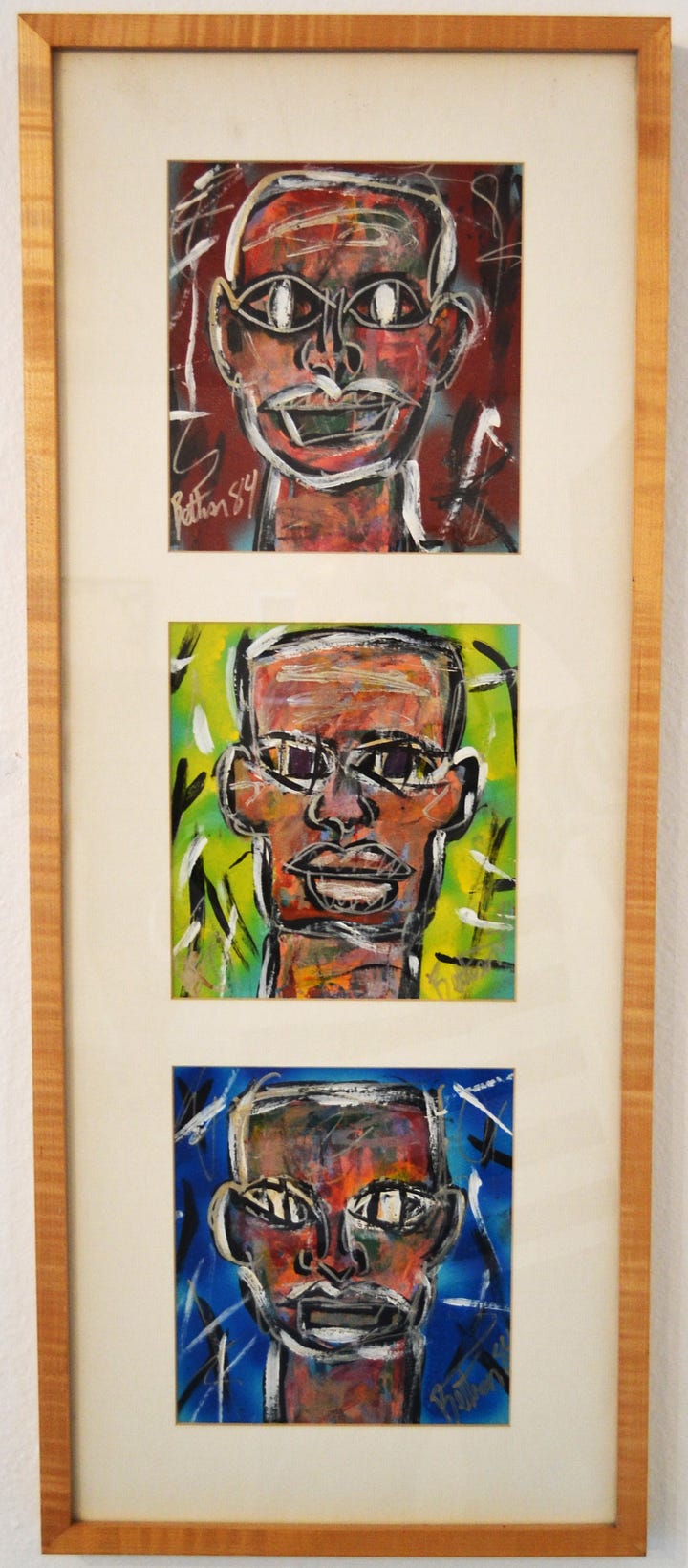
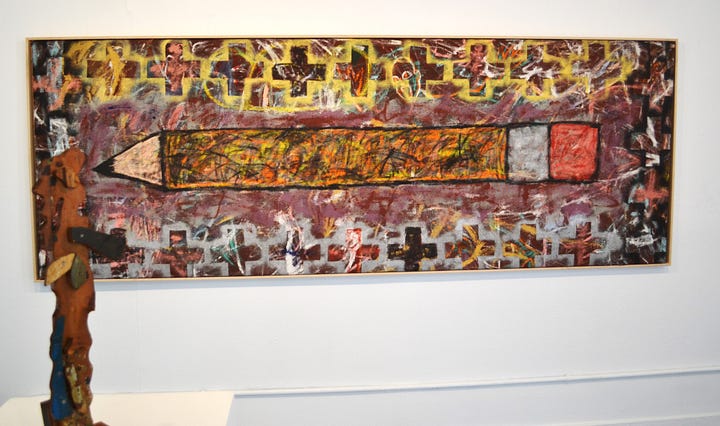
James Bettison (1957-1997) is mainly known to me because he was one of the early artists at Commerce Street Artist Warehouse. He died of a spider bite which became complicated because he received a cortisone shot which interacted very negatively with his HIV infection. This row house full of his paintings was revelatory to me because I had never seen so much of his artwork at once. I’ve never loved the isolated examples of his work I had seen before, but somehow a whole room full of Bettison artworks was very moving.
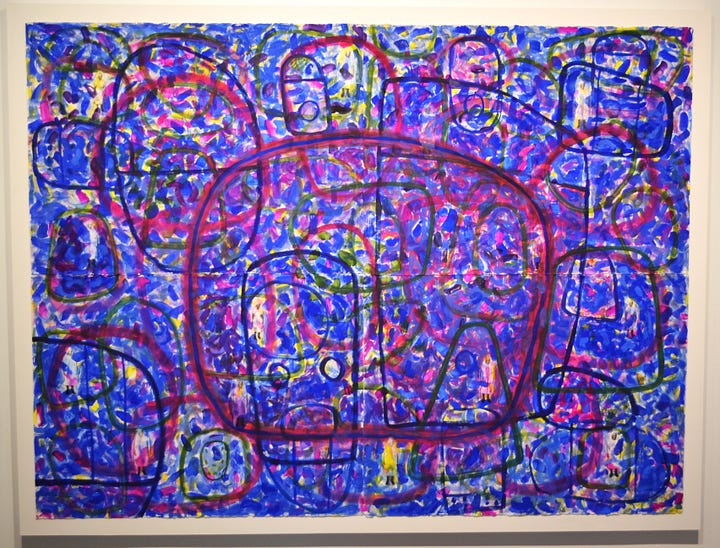
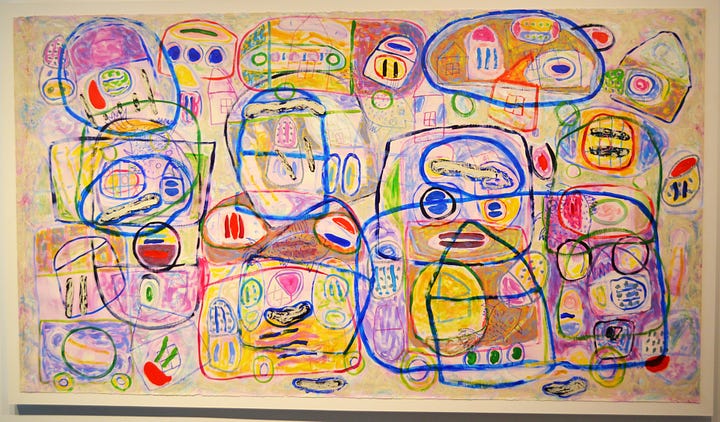
Floyd Newsum, like George Smith, has a long presence in Houston as a teacher—he has been an art professor at UH Downtown since 1976. Every night owl on Main Street downtown has seen his work Planter and Stems, which was sited next to the Red Line light rail in 2004. I can’t resist his colorful abstractions.
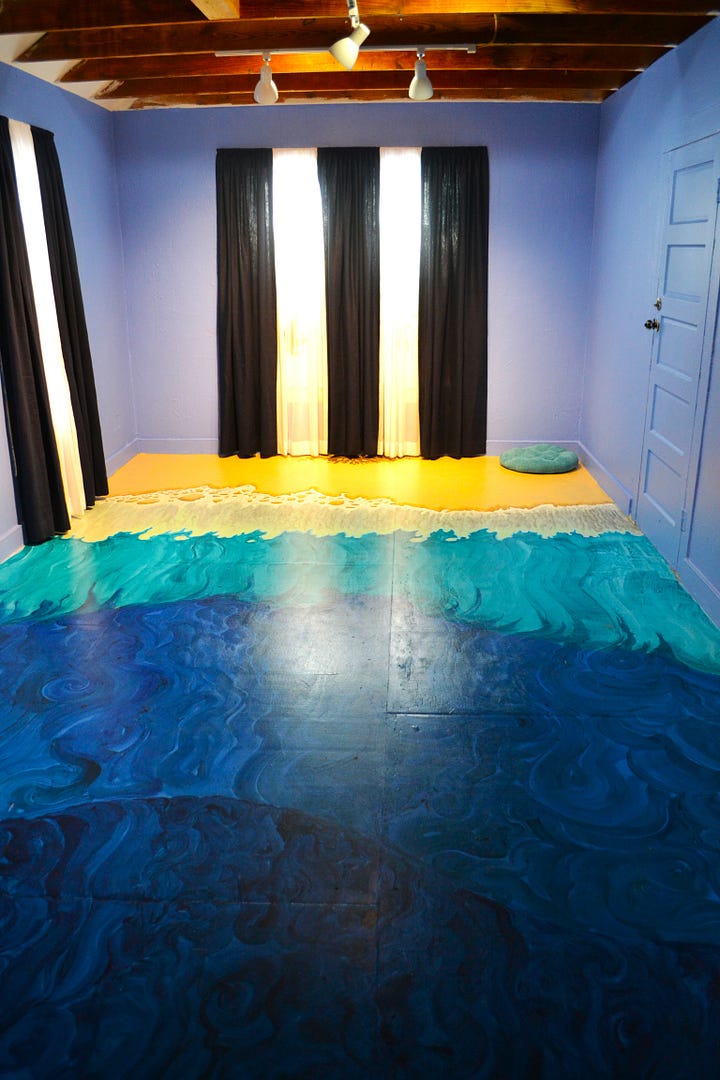
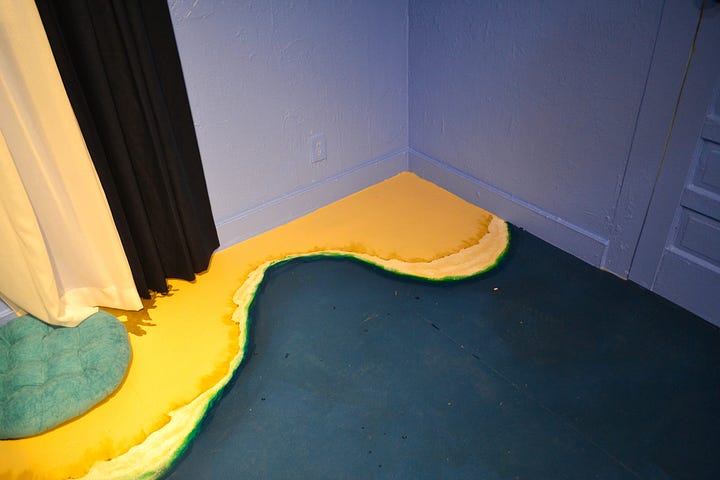
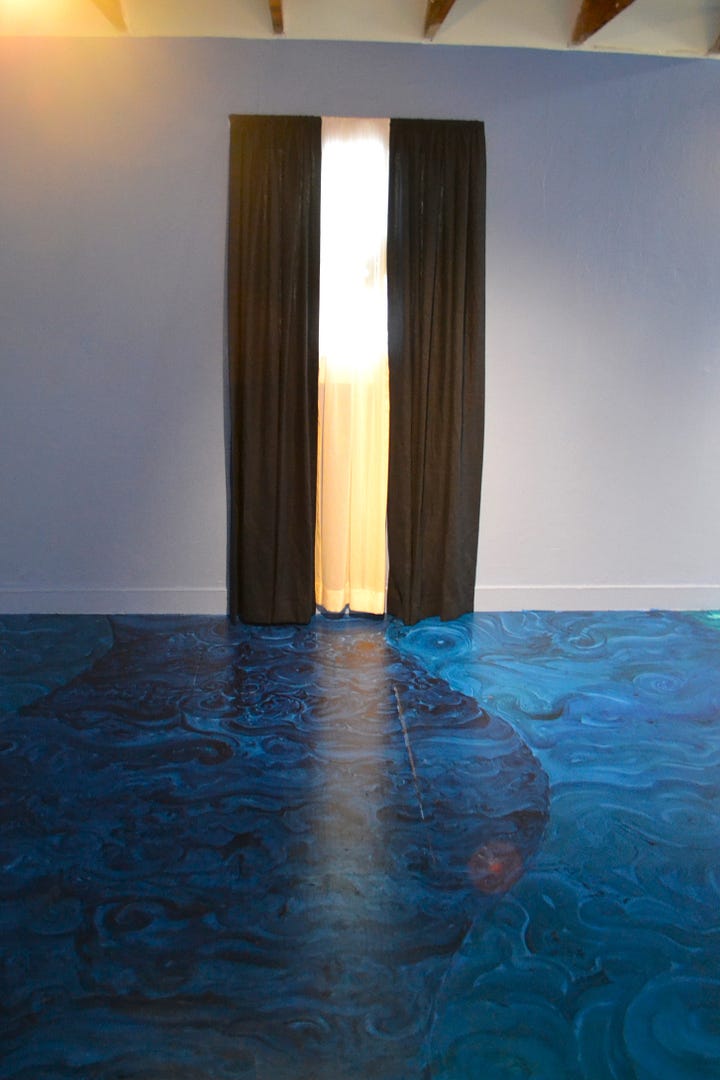
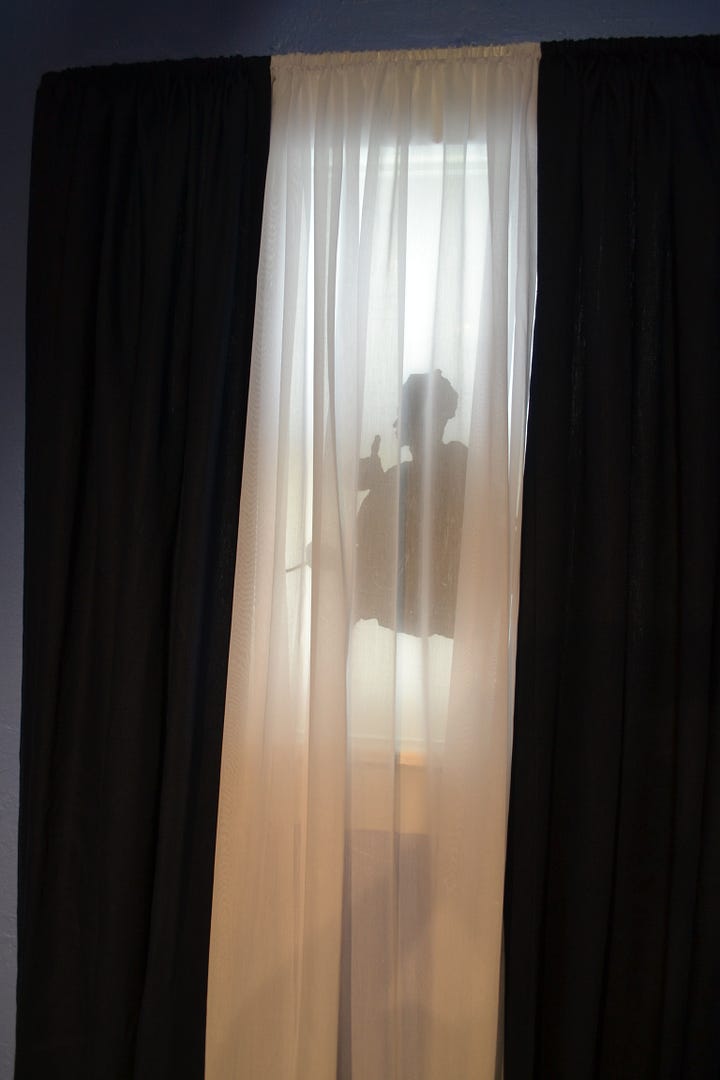
Of all the founders in the exhibit, I am least familiar with the art of Bert Samples. For this exhibit, he created am elaborate installation, employing the entirety of the Row House as part of the art. He painted the floors as an ocean and beach. (Visitors were required to take off their shoes.) The windows had ghostly silhouettes of musicians. He writes, “I want visitors not to view them as just another set of houses but to allow themselves to be transported to the bowels of a ship on a voyage with enslaved people.” That makes one imagine that the installation would be terrifying and painful to experience. But oddly enough, it was not. It felt comfortable and meditative in Sample’s installation.

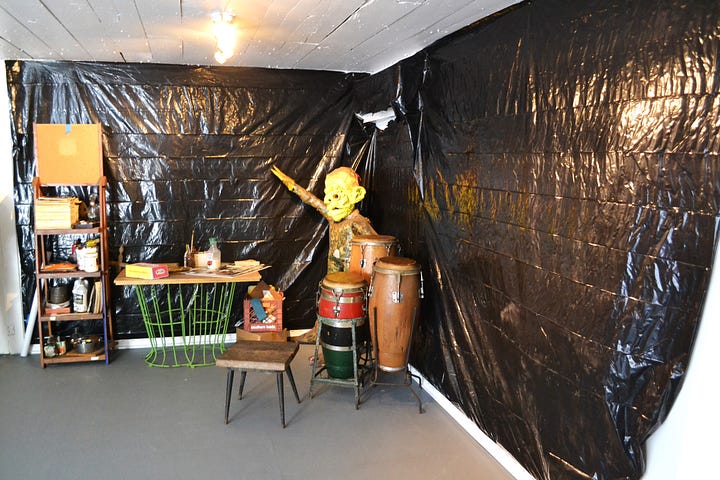
Jesse Lott (1943=2023) died a couple months ago. His row house is arranged to look like his studio. The name of this installation is Time and Spaces, and it was curated by Vida and Wayne Lott (I know Vida is one of Lott’s sons, and I assume Wayne is as well). It has the cluttered feel of an art studio, made even funkier by the inclusion pf the conga drums and a stand-up bass. Was Jesse Lott also a musician? Anyway, this feels just right for a recently-departed artist who still feels like a vital presence.
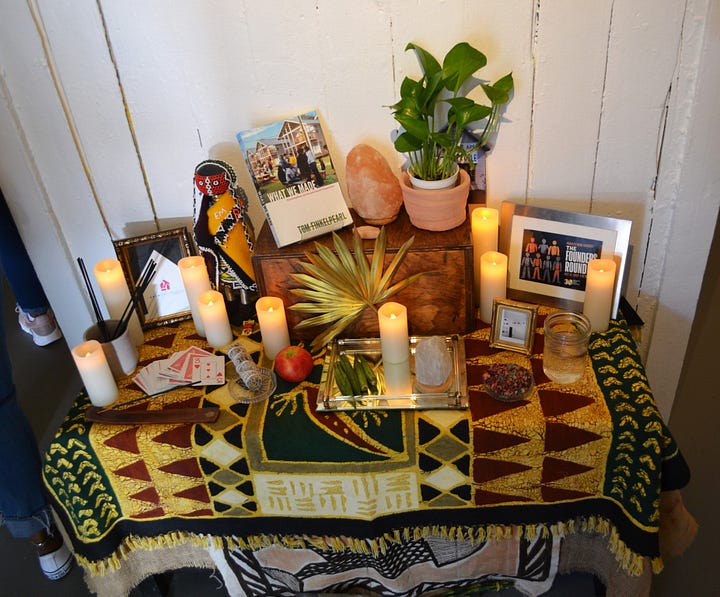
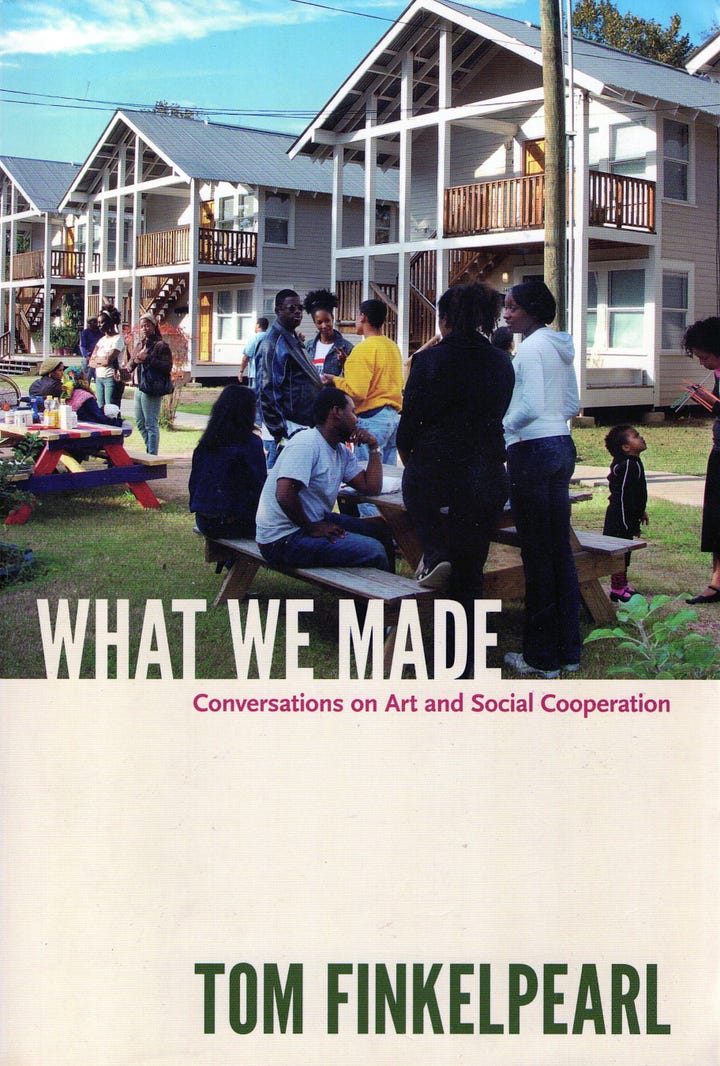
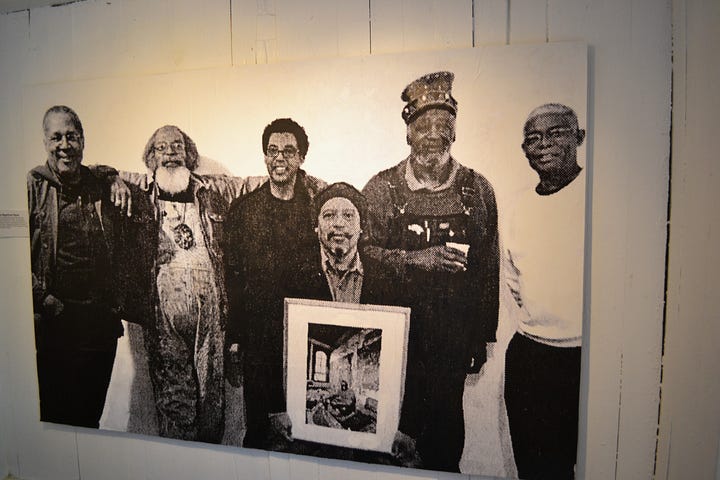
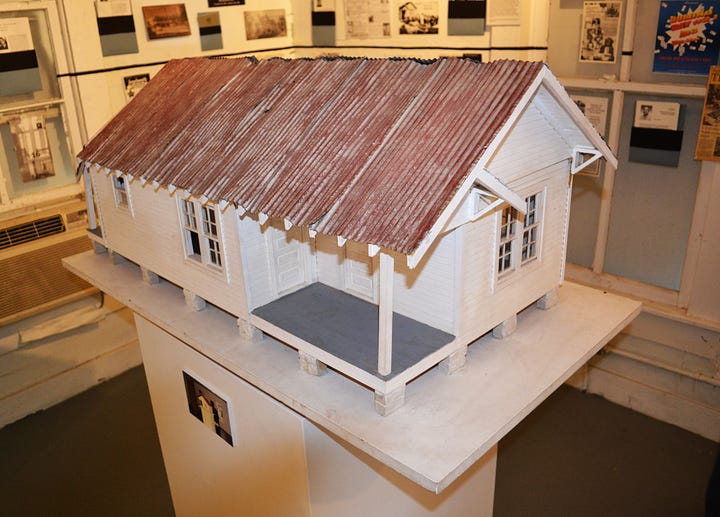
The last Row House of the Founder’s Round is The Archive House, which contains a lot of th ephemera of Project Row Houses. Included is a small shrine with candles, photos and a copy of What We Made by Tom Finkelpearl, a book that features PRH on the cover and has a chapter devoted to it, as well as a long interview with Rick Lowe about PRH. And included in the archive house was a charming, beautifully made model of a row house, as well a grainy blown-up photo of the founders.
I will be back to see the Founder’s Round. It will be nice to visit it when they aren’t having a gigantic block party and it’s quiet and not so crowded. The Archive House really demands some time and quiet to really explore thirty years of PRH history.
[Please consider supporting this publication by becoming a patron, and you can also support it by patronizing our online store. And one more way to support this work is to buy books through The Great God Pan is Dead’s bookstore. ]




